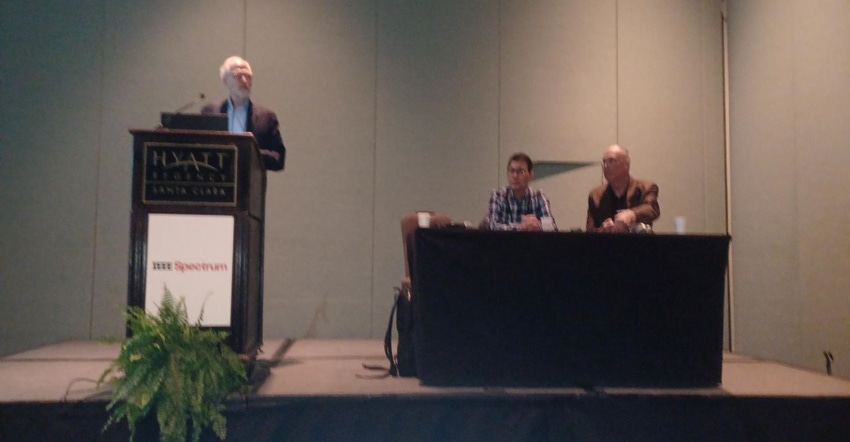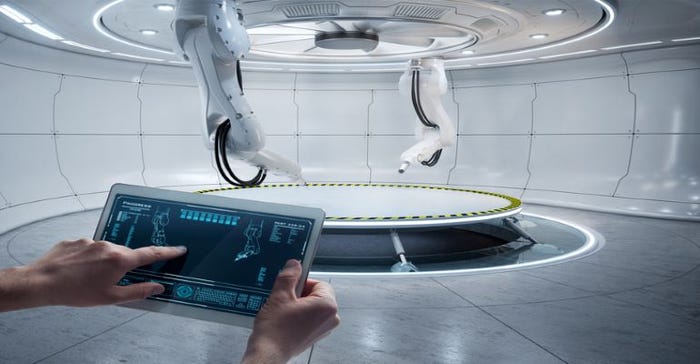This roundup of news from the DesignCon Show and Conference earlier this month examines trends in AI, automotive electronics, memory, and 5G and portable design.

Design engineers looking for latest and greatest in electronics technology were not disappointed by the recent DesignCon Show and Conference in Santa Clara, Calif., where technical sessions, panel discussions, and exhibits highlighted developments in areas ranging from autonomous technologies to test equipment.
Design News had the opportunity to attend a number of technical sessions as well as visit exhibits and meet with a number of companies discussing design engineering advances. Here’s a roundup of some of the more interesting highlights.
Memory Technology Challenged by High-Speed Computing
The demands of servers for AI and other high-speed computing applications has placed greater needs for memory to keep up with high-speed data transfer and storage. Several memory company executives discussed these challenges during a DesignCon session titled, “New Directions in Memory Technology.”
Debendra Das Sharma, Senior Fellow at Intel Corporation, said, “There’s a groundswell for newer memory technologies. Sharma, who also chairs Universal Chiplet Interconnect Express (UCIe) Consortium and co-chairs the CXL Consortium, said that the growing use of chiplets and the CXL interface would create opportunities to use newer types of memory beyond familiar options such as DRAM.
David Mcintyre, Director of Product Planning and Business Enablement for Device Solutions Planning at Samsung, added that the priorities with future memory technology would be reducing latency by moving computing closer to where the data resides, as well as trying to lighten host processor resources.
The speakers discussed several alternatives to the familiar DRAM and SRAM, including Magnetoresistive RAM (MRAM), a non-volatile random-access memory that stores in magnetic domains. While MRAM’s use has been limited, the technology promises some advantages in power consumption and performance.
56 Challenges Design of Smartphones and Tablets
Consumers want their smartphones and tablets to be slim, have long battery life, be well constructed, and provide the latest in connectivity by being compatible with 5G networks. Trying to meet all these needs is doable, but not easy, according to Kinger Cai, Principal Engineer at Intel. During a DesignCon session titled, “System Design Challenges with 56 and mmWave integration,” Cai noted one of the principle considerations is the antenna design.
According to Cai, engineers have to cleverly lay out the antennas so they not only fit in the narrow form factor of the portable device, but so that there is sufficient isolation and no performance-hampering crosstalk. “You also need to consider the co-location of antenna with other metallic components, such as the tweeter, woofer, mike, power/volume buttons, and audio jack,” Cai said.
Cai happily noted that paying attention to all these painstaking details resulted in a portable device that met the design goals of a physically slim device that achieved the required 5G performance goals.
Engineering Will Change Due to AI

Artificial intelligence and machine learning, not surprisingly, became hot discussion topics at DesignCon. Panelists debated the ramifications of AI in engineering during a DesignCon panel session titled, “Will AI Ever Replace Engineers.” The panelists generally agreed that AI will change the way engineers work, but stopped short of stating AI would make engineers’ jobs redundant.
Joel Sumner, Senior Vice President of Semiconductors, said, “it is inevitable our jobs will change in some way. It has to. everyone is ambitious. AI will take away some tasks that we cannot get to.”
Michael Jackson, Corporate Vice President of R&D Systems for EDA tool supplier Cadence, said AI would be a tool for engineers to obtain results during the design cycle. Cadence and other EDA suppliers have in recent years made significant steps in incorporating AI into design software to speed tasks such as verification and physical design.
Grace Yu, Senior Engineering Manager for Meta, said the company was researching using AI to apply to data models for the metaverse. “We are thinking AI will help us to explore out of the box solutions and optimize designs.”
AI Changing the Vehicle Experience
In another DesignCon panel, the role of AI and machine learning in vehicles was discussed in a session titled, “AI/ML in Chip and Board.”
Veerbhan Kheterpal CEO and Cofounder, Quadric.io, says AI has been making its way into cars in recent years, giving the safety features many vehicles incorporate such as lane-keeping assist, adaptive cruise control, automatic braking, and parking sensors.
Steve Teig, CEO of Perceive, added that AI has so far largely been used as assist to humans focusing on what humans can do. Teig believes AI in the future will move to doing thing humans cannot do.
The need for AI to be transparent was emphasized by Kurt Busch, CEO of Syntiant. “It should be transparent and help us out,” he said.
AI as a tool for predictive analysis could also assist in future maintenance and repair, said Quadric.io’s Veerbhan Kheterpal. “But a predictive maintenance platform will take a lot of time and effort to develop.”
Security and reliability are always key with vehicles, and the panel agreed that security is a moving target as hackers are always trying to stay a step ahead.
Aging vehicles can be an issue as hardware gets older, noted Geoff Tate, CEO and Cofounder, Flex Logix. “Wearout is an issue with semiconductors, everything that gets older gets less reliable.”
Spencer Chin is a Senior Editor for Design News covering the electronics beat. He has many years of experience covering developments in components, semiconductors, subsystems, power, and other facets of electronics from both a business/supply-chain and technology perspective. He can be reached at [email protected].
About the Author(s)
You May Also Like





